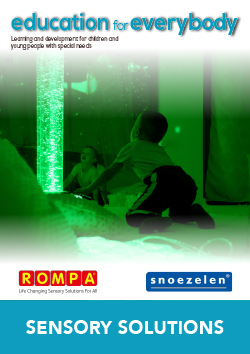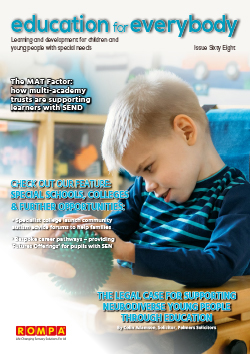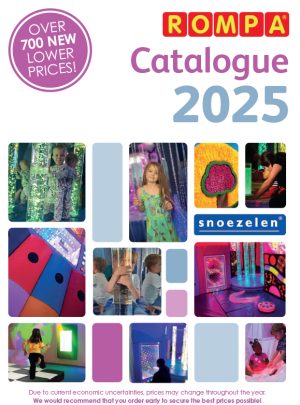With over 1.5 million children in the UK recognised as having special educational needs (SEN), the demand for spaces that cater to those who require extra support is growing.
The number of children requiring SEN support has increased by 87,000 since 2022 alone, but less than 10% of these children attend schools that can meet their particular needs. The majority of children with special educational needs and disability (SEND) requirements are typically expected to thrive within the same home and play spaces as those who don’t require additional support.
National decorating contractor Bagnalls works with colour specialist partner AkzoNobel, famous for its Dulux branded paints, to develop an understanding of how colour can help prioritise wellbeing for those with SEND needs. Bagnalls and AkzoNobel recommend the following four tips to create a positive and soothing SEND-friendly space using colour and light.

Key findings
- Select your shade carefully. Bright yellows, oranges and reds can be overwhelming, especially for those who experience hypersensitivity. Choose neutral tones or colours from the cooler side of the colour wheel like blues, greens and purples instead.
- Consider age range. Fresher, brighter colours are better for younger children and muted tones are better for older teens.
- Lean into the light. The amount and direction of light affect the appearance of colour. Always take the light in the room into account when thinking about colour placement.
- Invest in colourful furniture. This can engage children and isn’t as overwhelming as four brightly painted walls. This is especially relevant for those who experience hypersensitivity. However, bright white furniture should be avoided as that can cause glare and affect hypersensitivity and hyposensitivity.
Select your shade carefully
Colour helps young children to navigate a space and gain an understanding of their surroundings. Colours such as bright red and yellow are often used in primary classrooms to attract attention and engage. Using bright, warm-toned colours can stimulate creativity and increase energy during play.
However, these bright shades can be unsettling for those who experience hypersensitivity or hyposensitivity. Dawn Scott, a colour expert at AkzoNobel, agrees, explaining “It’s best to avoid yellows, reds and oranges as these tones can trigger hypersensitivity and create an overwhelming atmosphere. The best colours to craft a calming space are harmonious, muted colours.†Cooler tones, such as blue and green, encourage more peaceful sensory play.
Cooler tones are calming and studies have shown that colours such as lavender and aqua can help to reduce stress. Neutral tones, such as pale grey and tan, can also lower stress levels. Therefore, these colours are great choices for bedrooms, particularly for children who get frustrated around bedtime.
Orange can help to stimulate feelings of hunger, so is the perfect choice for the kitchen of a fussy eater, while purple works to diminish appetite but can produce a sense of calm and stability.
Finding a balance between warmer and cooler shades is important in all spaces. Understanding the specific requirements of those using the room is essential. As Dawn says, “Always consider the end user group and the intended use of the space when selecting your colours.â€
Consider age range
Colour sophistication develops as we grow. Dawn stipulates that “fresher, brighter colours are more appropriate for a younger audience. Greyed-off, muted and richer tones are more trend-led and therefore aimed at older children.â€
Colour is still important for the older age ranges, but allowing older children to choose a tone that makes them feel positive will help with independence as well as overall wellbeing.
Although primary brights appeal to developing senses, whether used within the classroom, at home or in a space reserved for play, these tones can be overwhelming, making the area inaccessible to those with SEND needs.
Selecting a calmer, sky blue for your child’s bedroom over a bright, neon blue will create a restful atmosphere that is still engaging for your little one. Yellow is associated with learning, making it a great choice for a classroom setting. Instead of opting for a harsh, overly bright yellow, try a softer, pastel tone.
Lean into the light
Light is crucial. The amount and direction of light within a room can affect the levels of calm, concentration and imagination possible within a space. Always consider light reflectance values (LRVs) – the measure used to quantify how light or bright a colour is.
Dawn recommends using “cooler tones in southerly sunny rooms and warmer shades in northerly shady rooms to help balance the reflection of light and make the space feel comfortable.â€
If your room is particularly small, you’ll want to capitalise on the light available to you to make the space seem bigger and brighter. However, you don’t need to stick to lighter colours to achieve a sense of a larger space. Darker, richer tones, such as royal blue and forest green, can trick your mind and give the illusion of endless space and colour.
Whilst this trick is beneficial for those who are not easily overstimulated, those with extra SEND needs may find a space decorated in deeper colours overwhelming. If glare is becoming an issue, causing eye strain and fatigue, Dawn suggests “putting a stronger accent colour opposite your window to absorb some of the glare and bounce less light around the room.â€
Almost all children who live with blindness or vision impairment also have additional SEND needs. For those who are visually impaired, LRVs are extremely important. 96% of those registered blind in the UK are able to detect some level of light. Contrast plays an important role in ensuring accessibility within a space. Always consider tonal contrast and make sure the saturation of two contrasting colours is significant, as those with low vision may find it difficult to differentiate between two similar tones.
Complementary colour combinations are also difficult for those with vision impairment to differentiate, such as red and green or orange and blue. These combinations can be jarring and overwhelming for many. Try sticking to a single colour palette, either red or green, instead of combining the two.
By being aware of the light within your space and understanding the role contrast plays in wayfinding, you can ensure your space is accessible to everyone.
Using brighter, primary colours in a selective way can enable further accessibility, especially when it comes to play and imagination. Bagnalls recently completed some important painting within a playground that makes it easier for visually impaired students to identify landmarks and potential hazards.
Invest in colourful furniture
Overly bright primary colours can be intimidating and overwhelming for many with SEND needs. By adding pops of engaging colour via furniture instead, you can create a space that is accessible for everybody.
Dawn recommends a “neutral colour scheme to create a calming atmosphere that the addition of colourful furniture can enhance.†The beauty of having colourful furniture is that you can move it around to play with light and engagement within the space.
By keeping your walls, ceiling and floor neutral, you can ensure your space is multi-functional. Investing in colourful furniture and toys for your child that you can remove from the space, you can furnish the same room to prioritise concentration, sleep and play.
By day, allow your child to scatter their primary-coloured toys around their room. Try adding a colourful chair or toy box to aid their creativity. If necessary, these items can be easily removed, leaving a calming, neutral space.
At night, ready the room for calm and sleep by adding a number of cosy throws and plush toys in deeper, jewel tones, such as emerald green and sapphire blue. These deeper shades will signal to your child that it’s time to feel calm and sleepy, in contrast to the stimulating bright colours of earlier in the day.
In a classroom setting, you can swap the chairs and tables to cater to different groups of children, dependent on age, SEND requirements and concentration levels. By maintaining a neutral base, one space can offer both a soothing and playful atmosphere with a few simple furniture changes.
By utilising these tips, you can work towards an inclusive and accessible space that doesn’t exclude those with SEND needs.






